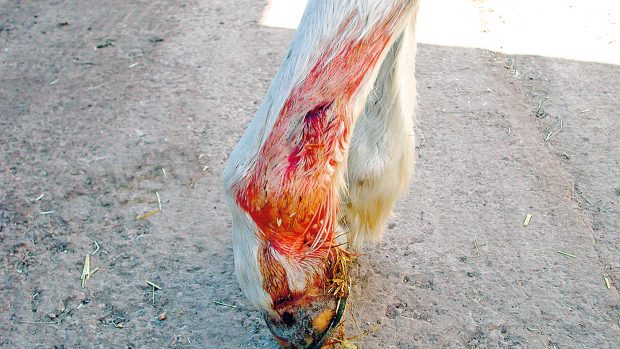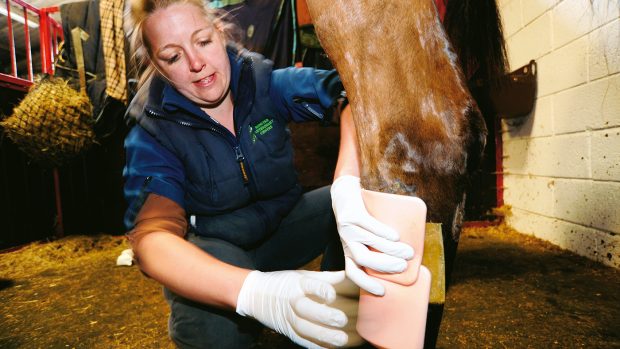Everyone involved with horses should have basic knowledge of first aid because the care a casualty receives in the first few minutes after an accident is vital and will affect their chances of recovery.
In the event of an accident in the field, consider first whether it is safe to approach the casualty. Once it is safe, check if they are conscious by speaking to them and gently shaking their shoulder. If the casualty doesn’t respond or is having difficulty breathing, shout for help and call 999 — it is better to be safe than sorry.
Any rider who has fallen may have sustained spinal injuries and should be treated with great care to prevent any worsening of the injury. However, failure to get air into the body will kill someone faster than anything else, so the decision of whether to move the casualty should depend on signs on life.
Follow the A B C D
The first thing to check is the casualty’s airway. Leave the rider’s hat on and loosen any clothing around the neck. Look into the patients mouth and use your fingers to clear the mouth of vomit, blood or broken teeth.
Unless a spinal injury is expected, open the airway by gently tilting the forehead back and lift the chin upwards. If you do suspect a spinal injury, keep the neck still and just push the jaw forwards.
Breathing
Look, listen and feel for breathing for 10sec. If the casualty is not breathing, you’ll have to start mouth-to-mouth rescue breaths. Pinch the victim’s nose closed, take a deep breath and place your lips around their mouth, ensuring you have a good “seal”. Blow steadily for about 2secs to make the chest rise. Lift your head away and take another deep breath while the chest deflates and repeat once.
Circulation
Check for any signs of circulation such as a pulse, coughing or swallowing. If signs of circulation are present, then continue rescue breaths every 4sec until the casualty starts to breathe on their own.
If there are no signs of circulation proceed to CPR (cardio-pulmonary resuscitation). At this stage protection of the neck and back is relatively less important, so move the patient on to their back on a firm surface and find the centre of the chest (about two fingers’ width up from the lowest point of the breastbone).
Place your hands one on top of the other, both facing down, and use the heel of your hand to depress the chest about 2in, 100 times a minute. After 15 compressions, give two more breaths and continue alternating 15 compressions with two breaths. Continue until the casualty shows signs of life or until professional help arrives.
Deadly bleeding
Applying direct continuous pressure is the best way to stop any bleeding. Elevate the bleeding part, remove any tight clothes and press directly on to the bleeding area with an, ideally clean, pad and your fingers for at least 10mins.
If you can do these simple things, you can save a life. The techniques pertain to any episode, however caused. So have a go — if things are this bad you can do no harm. Don’t panic, just do your best. Be sensible and logical, and remember that one day they might be doing the same for you.
|
||
 |
||


 Get up to 19 issues FREE
Get up to 19 issues FREE TO SUBSCRIBE
TO SUBSCRIBE 


